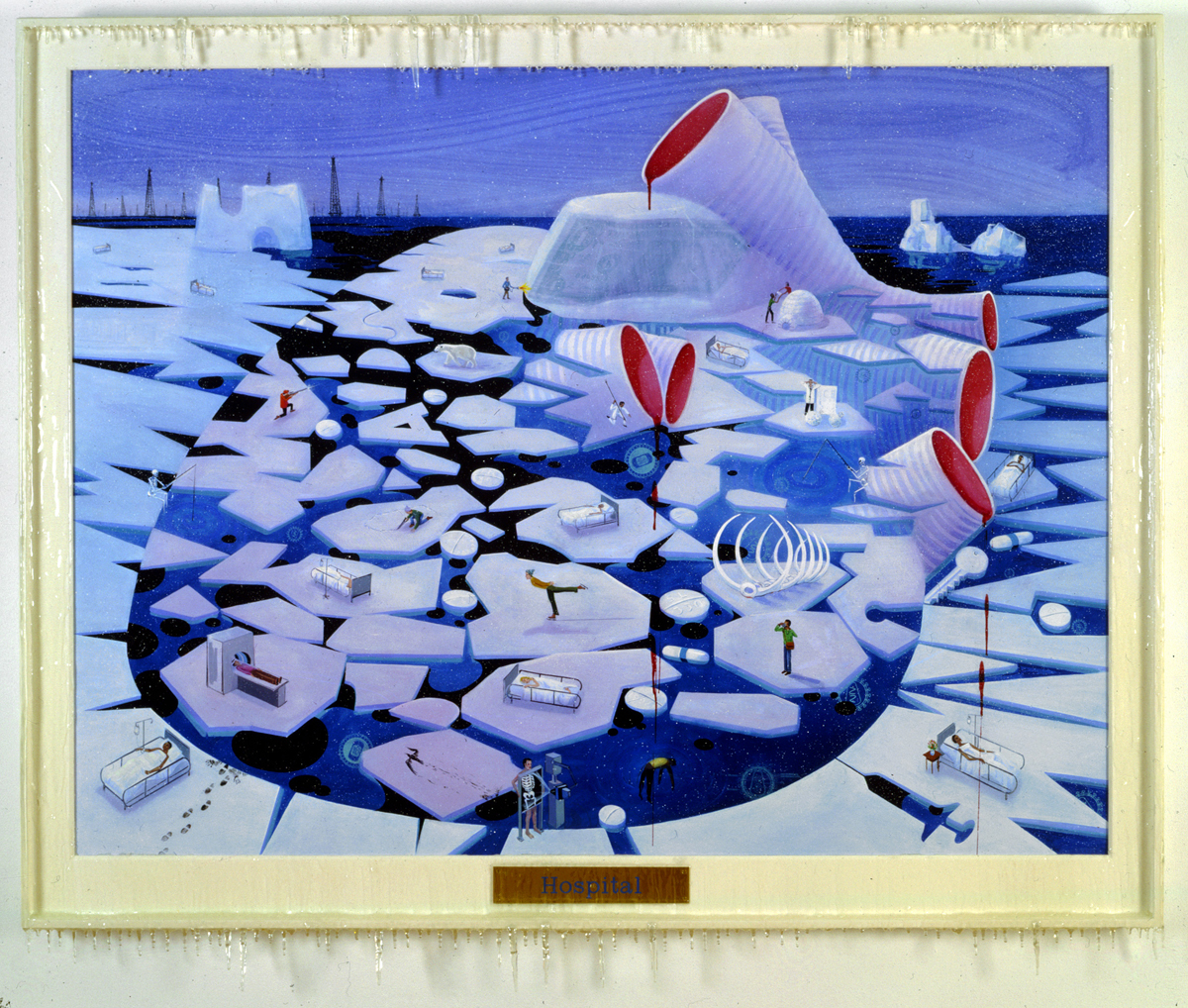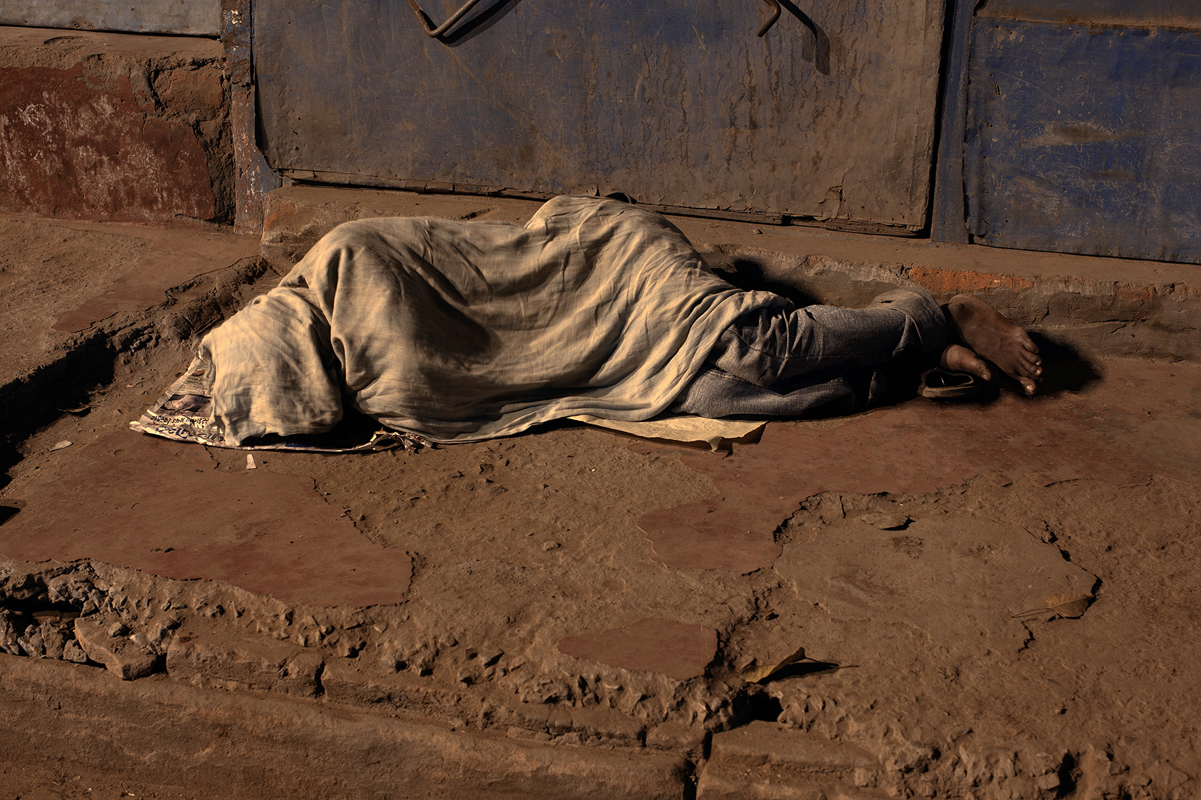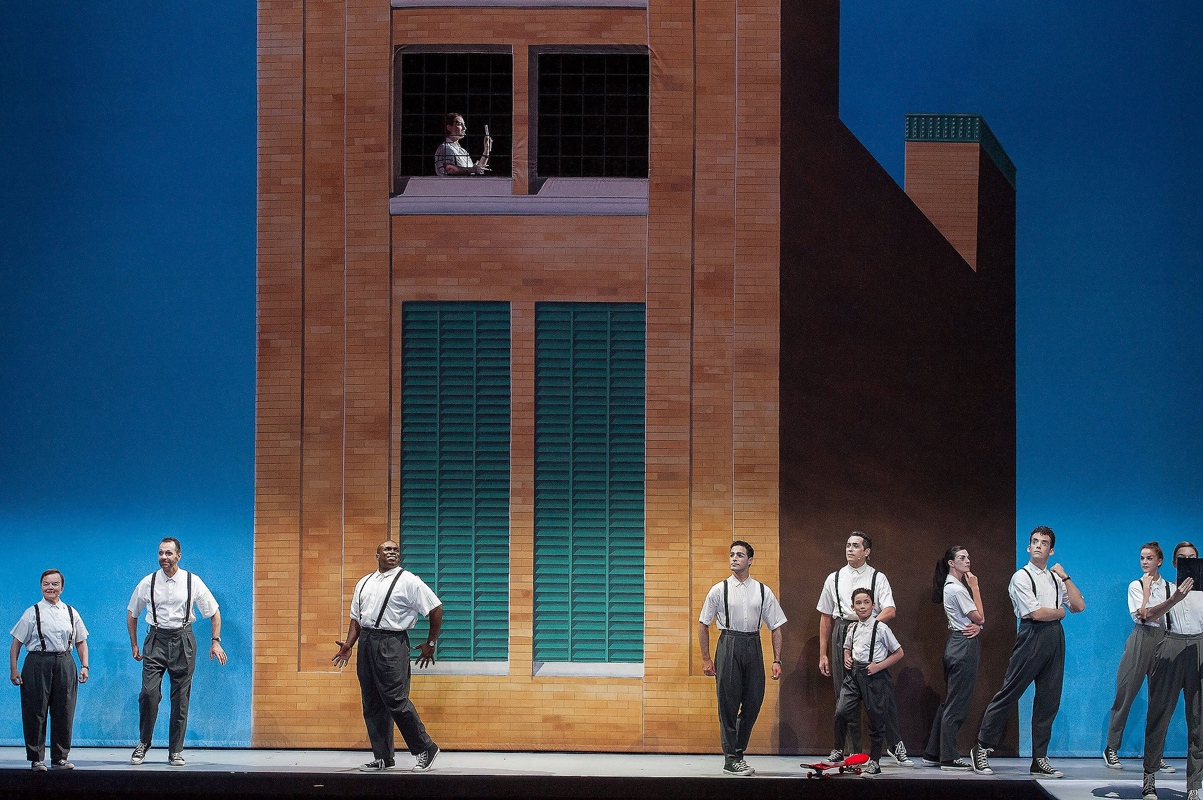
Frank Moore « Hospital », 1992. Oil and silkscreen on wood, in artist’s frame (painted wood and resin). Private collection, Houston. Image: Courtesy Sperone Westwater, New York.
I knew, for sure, that I was home again a few days after my plane landed in New York. Riding the crowded, sweaty subway, beleaguered passengers were suddenly confronted with yet another beggar, a young, strung out white guy in jeans who moaned about the indignity of his situation and then proceeded to tell us (in way too much detail, and way too loudly) why he and his young family were in such dire straits and what we could do to help them. This is, of course, a familiar occurrence in the Big Apple; none of us thought much about it until another passenger, a black woman who obviously rides this particular subway line regularly, began disputing the facts of the beggar’s story by pointing how much he’d embellished or altered it since she heard it the week before. Calmly, the two of them negotiated the details and authenticity of his public “performances,” while the rest of us howled with laughter (and of course, offered him some cash). Only in New York…
The other way I know I’m home, of course, is the overwhelming, daunting task facing me and everyone else interested in keeping up with the sheer quantity and diversity of cultural offerings in this town. When the rentrée begins here, the floodgates open; even though this blog will end in a few weeks, life never stops in the big city. There are some fine gallery shows by well-established artists like Robert Adams (Matthew Marks), Sally Mann (Edwynn Houk), James Welling (David Zwirner), Douglas Gordon (Gagosian), Cedric Nunn (David Krut), Lise Safarti (Yossi Milo) and Richard Misrach (Robert Mann Gallery); retrospective glances at the influences of Warhol (at the Metropolitan Museum) and Conceptual Art (coming to the Brooklyn Museum); group shows like that surveying the Gutai Art Association in Japan (at Hauser and Wirth) and the thought-provoking mélange of objects from diverse cultures called Collectors of Skies (curated by Valérie Rousseau and Barbara Safarova) at the Andrew Edlin Gallery. There was a wonderful reading from, and discussion of, My Poets, the new and surprising book about her personal creative process by writer and scholar Maureen McLane. For this blog post, however, I will single out a few of the things I’ve seen this month that I’ve especially enjoyed.

Frank Moore « Freedom to Share », 1994 Oil and glass beads on canvas mounted on wood. Collection of Thomas H. Lee and Ann Tenenbaum, New York. Image: Courtesy Sperone Westwater, New York
First on my list is the Frank Moore exhibition of paintings, videos, drawings, writings and stage designs, entitled Toxic Beauty, at the Grey Art Gallery and the Fales Library of New York University. An active participant in the Downtown art scene until his early death from AIDS in 2002, Moore’s eccentricity and utter originality shine through in this retrospective of his work about illness, toxicity and the environment. Large scale, almost magic realist paintings, colorful and bizarre, remind viewers immediately of artists like Frida Kahlo, whose image-world was both personal and extremely political in its pain and its naivety. Sometimes based on photographs of models, Moore’s works morph immediately into surreal alternative universes, where hospitals become broken ice floes with patients and doctors stranded in isolation. Thanksgiving dinner is a blood (and not a turkey) fest shared by all races, colors and creeds, and buffalo roam not on the range but on white bed sheets. Hieronymus Bosch-like characters make their way through landscapes littered with medical vials, mice and pills, illuminated by piles of gold coins. In Moore’s reality, every frame is a work in itself: pharmaceuticals, plumbers’ pipes and maps echo and encircle the iconography, breaching the boundaries between art and life so that bizarre and horrific images spill over to implicate those of us seemingly safe in the surrounding space.

Focus, 2001. Digital C-Type print on canvas, hair, silk threads, and cotton threads. Collection of the artist © Lin Tianmiao
I was also enthralled by the retrospective of Lin Tinmiao, one of China’s foremost women artists, at The Asia Society Museum. Surveying her work since 1995, Bound/Unbound is comprised of installations, sculptures and two-dimensional works, many of which have never been seen outside of China. Thread and hair, usually white, link the works in this show, and it is often hard to distinguish between them. Wrapped around objects, obliterating or enhancing photographed faces, morphing into bodies, body decorations or covers, these tangled skeins are sometimes accompanied by video or sound. This is an uneven exhibition; works like The Proliferation of Thread, Bound and Unbound and Focus are very strong statements, while others seem less powerful and more decorative in impact. Most extraordinary, from my point of view, is Here?Or There?, originally produced with her husband Wang GongXin for the 4th Shanghai Biennale of 2002. A room filled with mannequins, dressed in bizarre and beautiful costumes made by the artist that hover between the traditional and the space-age, opens outward toward video views that flash between old landscapes of China and the new, dissonant cityscapes into which the country is transforming. Watching this extraordinary spectacle, familiar yet foreign, fascinated by a vision of people, of society, of female experience I could perceive but never fully grasp, I was grateful once again for the window onto the world that contemporary art provides.

Ether, 2008-2011 pigment print on handmade Innova Smooth Cotton Natural White paper mounted to board image © Fazal Sheikh
Speaking of which, there is also the debut show of Fazal Sheikh’s latest work now on view at Pace/MacGill Gallery in midtown Manhattan. Entitled Ether, comprised of over 40 small pigment prints of images taken in the sacred city of Varanasi (Banaras or Banares on the banks of the River Ganges in Northern India), the images focus on sleep, dream, death and birth in the place Hindus consider the auspicious site of the soul’s emancipation from the eternal cycle of reincarnation. Often seen in groupings that juxtapose various bodily states or the five elements, the photographs document – but can never penetrate — the mysteries of the physical body as it enters the world, travels in dreams or is transformed through death into earth, fire, water, air and ether. With these quiet and beautiful images, Sheikh is paradoxically using photography’s descriptive capabilities to highlight the spiritual side of our nature, the ineffable metamorphoses between states of being that can be neither perceived nor described. Like Zoe Leonard, who has created another in a series of site-specific and room-sized camera obscuras in Murray Guy’s Chelsea gallery, Sheikh has decided to look beyond the purely political and ask different, less tangible, questions about sight, subjectivity, culture and interconnectedness.

Ether, 2008-2011 pigment print on handmade Innova Smooth Cotton Natural White paper mounted to board image © Fazal Sheikh
And then, last but not least, there was the revival of Einstein on the Beach at the Brooklyn Academy of Music. This is the third time I’ve seen this magnum opus by Robert Wilson and Philip Glass with choreography by Lucinda Childs (all of whom were in the house for opening night) – and the first time was the original performance at the Metropolitan Opera House in 1976. Einstein, for me, is therefore a homecoming of a different sort, a reminder of a Downtown New York legacy that sometimes seems quaint (there’s a whole scene where a toy space ship traverses the closed grey curtain) but that nevertheless has lost none of its original power. The train and the courtroom, the clocks and the night bus, the sounds and words and gestures endlessly repeated but always new: they were there, they are here, they are luminous. They are icons whose strength lies precisely in coalescing the fugitive visions glimpsed in passing within Leonard’s camera obscura, and making manifest whatever is monumental about our passage through space and time.
© Shelley Rice, 2012
